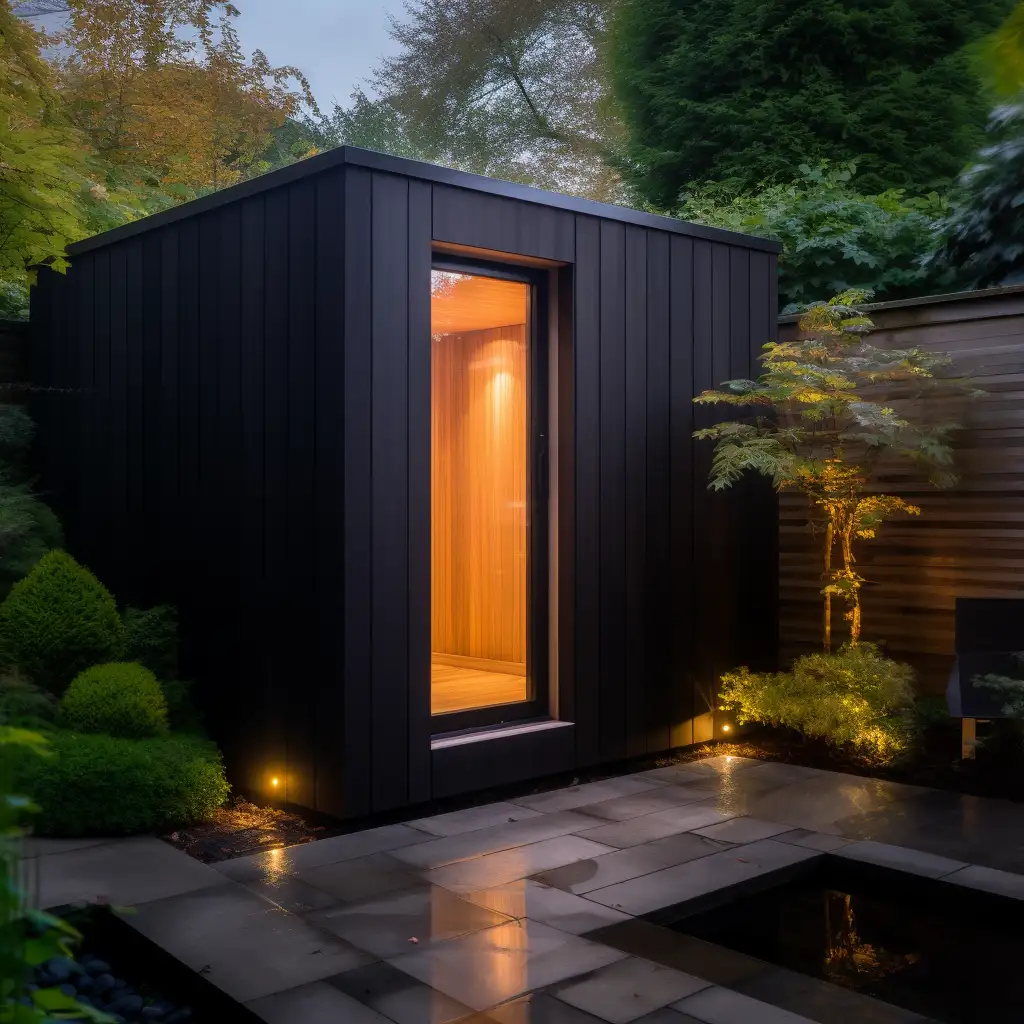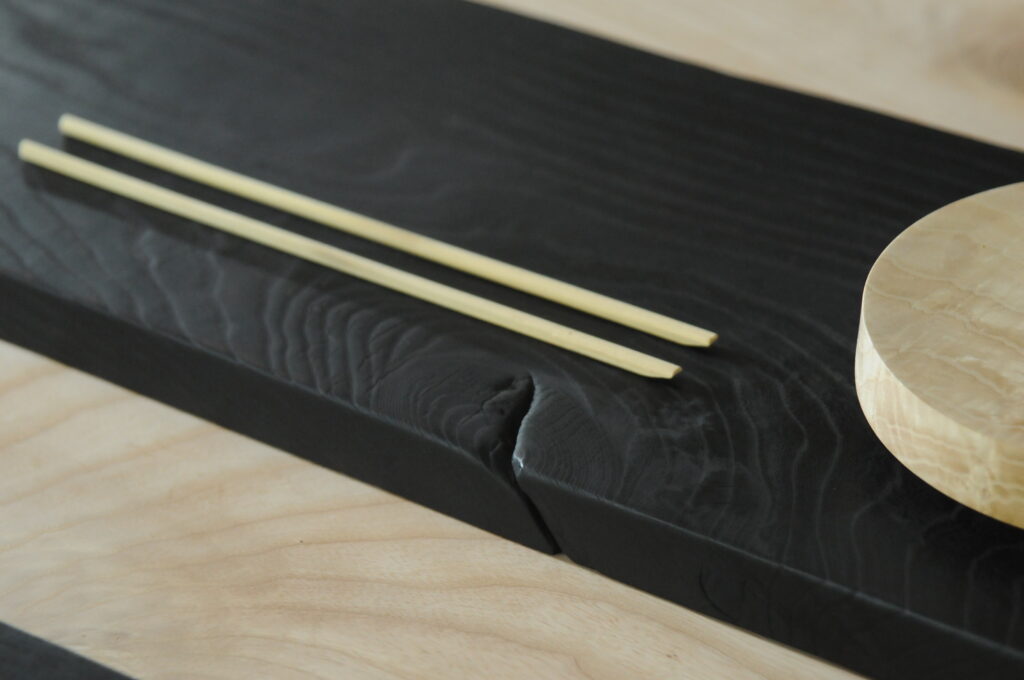
Exploring Yakisugi (Shou Sugi Ban)

Exploring Yakisugi (Shou Sugi Ban)
/
Exploring Yakisugi (Shou Sugi Ban): A Traditional Japanese Woodworking Technique for Exteriors, Interiors, and Furniture
Yakisugi, also known as Shou Sugi Ban, is an ancient Japanese wood preservation technique that has captured the attention of designers, architects, and woodworkers around the world. Rooted in Japan’s history and traditions, this technique involves charring wood to enhance its durability, aesthetics, and weather resistance. Originally used for exterior applications, today Yakisugi has expanded into interior design and furniture, offering a beautiful and sustainable option for modern spaces.
/

In Edo Japan, yakisugi charred timber cladding was a building material used by the poorer classes, and it kept that reputation of being something lower classes used until the 1970s, according to a blog post on the history of the method; as a form of siding, it is highly durable—lightly charred wood resists flames, protects against insects, and becomes waterproof through carbonization, the post said. The merchant class lived in traditional wooden houses which needed protection from the fires which continually raged through the streets; 1,800 fires recorded during this period destroyed multiple structures and killed thousands. By getting a char on the timber, it became a useful tool to protect against regular fires. Today, the neighborhood of Saga Toriimoto, near Kyoto, is historically preserved from the Edo period, the darkened, weather-beaten shou sugi ban evoking past-meets-present.
/
What Is Yakisugi (Shou Sugi Ban)?
Yakisugi, or Shou Sugi Ban, directly translates to “burnt cedar” in Japanese. The technique involves charring the surface of the wood using fire, traditionally Japanese cypress (Sugi), although other types of wood can be used as well. After the wood is burned, it’s cleaned and sometimes brushed or treated with oil, resulting in a textured, darkened finish that is both visually striking and functionally protective.
The technique’s origins date back to the 18th century in Japan, where it was used primarily to preserve the wood used for building houses, fences, and boats. The charred surface prevents rot, insects, and weather damage, making it an excellent choice for outdoor applications.
/
/



/
Where Can You Use Yakisugi?
While traditionally used for exterior applications, Yakisugi has evolved into a versatile design tool for both the exterior and interior of homes and furniture.
/

Exterior of Houses
Yakisugi’s primary historical use was as a cladding material for buildings, especially in the humid climate of Japan. The charring process helps to protect the wood from the elements, making it highly resistant to moisture, rot, mold, and insect infestation. The deep, rich tones of charred wood, ranging from black to dark brown, also give buildings a distinctive, rustic aesthetic that beautifully contrasts with natural surroundings.
As an exterior material, Yakisugi not only adds a timeless, organic look to modern architecture but also acts as a protective barrier against the elements, making it ideal for facades, fences, and garden structures.
Interior Decoration
Inside the home, Yakisugi adds a unique warmth and sophistication to any space. The texture and depth of the charred wood create visual interest, while its natural color contrasts beautifully with minimalist modern interiors or traditional Japanese designs. From accent walls to ceilings, Yakisugi can be used to create a statement piece in any room.
It’s particularly effective in spaces that require a touch of nature, such as living rooms, dining areas, or entryways, where the aesthetic quality of the charred wood can enhance the atmosphere without overwhelming the space.


Furniture Desgin
Furniture made from Yakisugi wood offers both beauty and practicality. The charred texture and dark tones give a sense of sophistication and craftsmanship, while the wood’s durability ensures that it can withstand the wear and tear of daily use. Whether it’s a statement table, chair, or shelving unit, Yakisugi wood makes for an eye-catching and long-lasting piece.
The technique has become increasingly popular in custom furniture design, blending modern aesthetics with traditional techniques. Furniture made from Yakisugi can provide a touch of Japanese heritage while offering sustainable design that lasts for generations.
/
What Are the Benefits of Yakisugi?
The process of charring the wood brings several significant benefits that extend beyond aesthetics. Here’s why Yakisugi is worth considering for both exterior and interior use:
Durability and Weather Resistance
The primary benefit of Yakisugi lies in its weather resistance. When wood is charred, it creates a protective layer that shields it from moisture, rot, and pests. This natural protection makes it an ideal choice for homes located in areas with high humidity or severe weather conditions.On the exterior, Yakisugi helps reduce maintenance costs, as the charred wood lasts much longer than untreated wood, which might require frequent sealing or staining.
Aesthetic Appeal
The deep, blackened wood exudes a unique, earthy elegance that cannot be replicated through other treatments. The texture left by the charring process creates an organic look that changes with the light, creating an ever-evolving appearance throughout the day. It’s a versatile finish that works in both traditional Japanese interiors and contemporary spaces, offering both rustic charm and modern sophistication.
Sustainability
The Yakisugi technique is eco-friendly. By using fire to preserve the wood, there is no need for harsh chemicals or preservatives. Additionally, the long lifespan of the charred wood reduces the need for replacements, making it a sustainable choice for both exteriors and furniture. The use of cedar or other sustainable woods ensures that the technique aligns with green building practices and eco-conscious design principles.
Fire Resistance
Interestingly, the charred surface of the wood actually makes it more resistant to fire. The burn creates a barrier that makes the wood less likely to ignite, which can be an added safety feature, especially for exterior applications. This is particularly useful in areas prone to wildfires or where fire safety is a concern.
Conclusion
Yakisugi (Shou Sugi Ban) is more than just a wood treatment technique – it’s a beautiful blend of craftsmanship, tradition, and sustainability. Whether you’re using it for the exterior of your home, adding a statement piece to your interior, or creating unique furniture, this technique offers a timeless, functional solution that enhances both the aesthetic and longevity of wood.
By embracing Yakisugi, you can bring a piece of Japan’s woodworking heritage into your space, creating a harmonious balance between nature, art, and modern design. Its durability, aesthetic appeal, and sustainability make it a wise choice for those seeking a natural yet refined style that stands the test of time.
/
/


